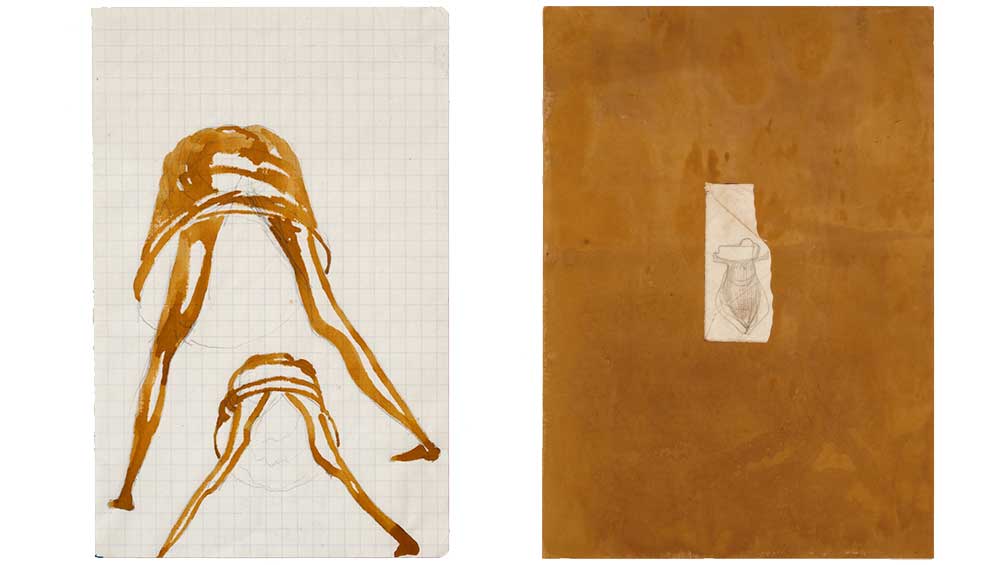
Left: Joseph Beuys. o. T. (Petticoat), 1951. Ferreous watercolour and pencil on squared paper, sheet: 17 x 11.4 cm; Right: Untitled (honey pot), 1949. Pencil on torn envelope, mounted on paper coated with ferrous watercolour or Beize, sheet: 29.5 x 21 cm (11.61 x 8.27 in). Photos: Charles Duprat.
Thaddaeus Ropac, London
19 January – 22 March 2023
by BETH WILLIAMSON
Images of animals, insects, bodies and leaves, along with more conceptual pieces by Joseph Beuys (1921-86), fill the gallery spaces of the artist’s latest show at Thaddaeus Ropac in London. This is the first major exhibition dedicated to his drawings to take place in London for three decades. Almost 100 works on paper span 40 years, and the fragments, remnants and sketches build a picture of a practice that sustained him throughout his career.
The exhibition at Tate Modern in 2005, Joseph Beuys: Actions, Vitrines, Environments, considered the full gamut of Beuys’ oeuvre with well-known works such as the monolithic Fonds VII/2 (1967/84), the autobiographical Voglio Vedere le Mie Montagne (I Want to See My Mountains) (1950/71) and The Pack (1969), with its numerous sledges and a Volkswagen camper van, taking centre stage.
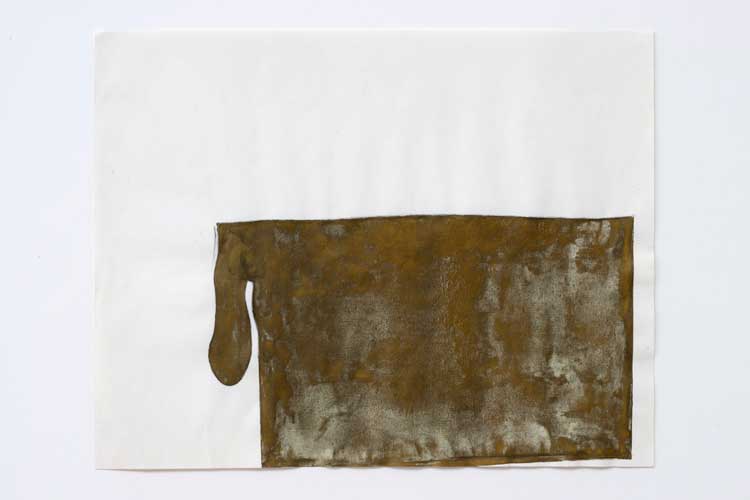
Joseph Beuys. Untitled, Undated. Gilded bronze on pencil or charcoal drawing, Image: 21 x 29,7 cm (8.27 x 11.69 in). Photo: Charles Duprat.
Almost 20 years later, the current exhibition at Thaddaeus Ropac embraces not Beuys’ signature materials of felt and fat, but works on paper from the 1940s through to the 80s. While his habit of drawing underpinned his wider practice (as a sculptor, performance artist, theorist, teacher, environmentalist and political activist), Beuys was clear that these were not preparatory works but experiments that allowed him to work out his ideas, a “form of thinking” that was central to everything he did. On the occasion of the 1993 exhibition of his drawings at the Museum of Modern Art (MoMA), Thinking is Form: The Drawings of Joseph Beuys, the curator Ann Temkin said: “Beuys has been described by those who knew him as constantly drawing: he drew while travelling, while watching TV, while in private discussion, while in performance. Beuys’ attitude towards drawing implied it to be as intrinsic to him as breathing.”1 It is entirely apposite, therefore, that this exhibition of his drawings should take place in the airy environs of Thaddaeus Ropac’s Dover Street gallery in London where the drawings and the viewer are given the time and space they deserve to breathe, to think and simply be.
There are, inevitably, differences between the drawings Beuys was making in the 40s while a student at the Staatliche Kunstakademie in Düsseldorf (he enrolled in 1947 and returned to teach in the 60s) and those he made in the 80s, in the years before his death.
For instance, a deep concern for the connections between humankind and the natural world is revealed through his early interest in insects and animals, which appear in the present exhibition in the form of a hare, a sperm whale, seals and elks. The spiritual connections made through these to German romanticism may have been a reaction to the traumas of the second world war, but Beuys saw a connection between humanity, nature, spirit and matter.
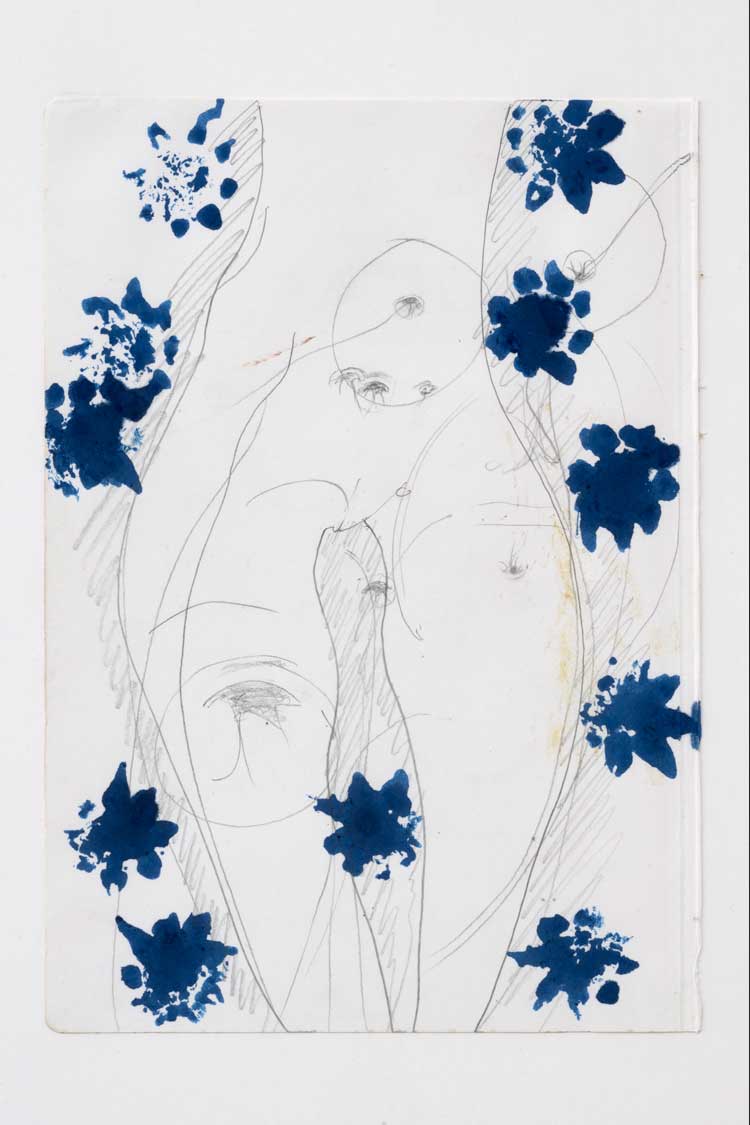
Joseph Beuys. Untitled, undated. Pencil and opaque watercolour, yellow abrasion, paper: 23 x 16.5 cm (9.06 x 6.5 in). Photo: Charles Duprat.
He was also profoundly interested in the thinking of Rudolf Steiner (1861-1925), a founding secretary of the German branch of the Theosophical Society. As Temkin explained: “Of particular interest to Beuys was Steiner’s understanding of Christ as the living force empowering all human creativity. Steiner’s ‘spiritual science’ replaced faith in an external being with a focus on one’s innate potential, a belief that found expression in Beuys’ famous declaration ‘Everyone is an artist’.”2 In the 50s, Beuys’ sparse treatment of the female nude nonetheless played to tropes of fertility and regeneration in the postwar period. The 60s brought a shift in his drawing and from his engagement with Fluxus came conceptual sketches, or scores, that were part of his “Actions” or performances. The present exhibition includes the drawing Untitled (Score for Eurasienstab) (c1967), linked to the Action of the same name performed by Beuys in Vienna that year and in Antwerp in 1968. With the 70s came further changes, enabling the act of drawing to occur publicly, hence his use of blackboards, several of which appear in this exhibition. His process of auditive drawing, as he called it, enabled him to draw in chalk on the board while talking to an audience. In the 80s, Beuys returned to earlier ideas, reimagining themes, materials and techniques and coming full circle in a manner that demonstrates his unerring commitment to drawing as a necessity for thinking and breathing.
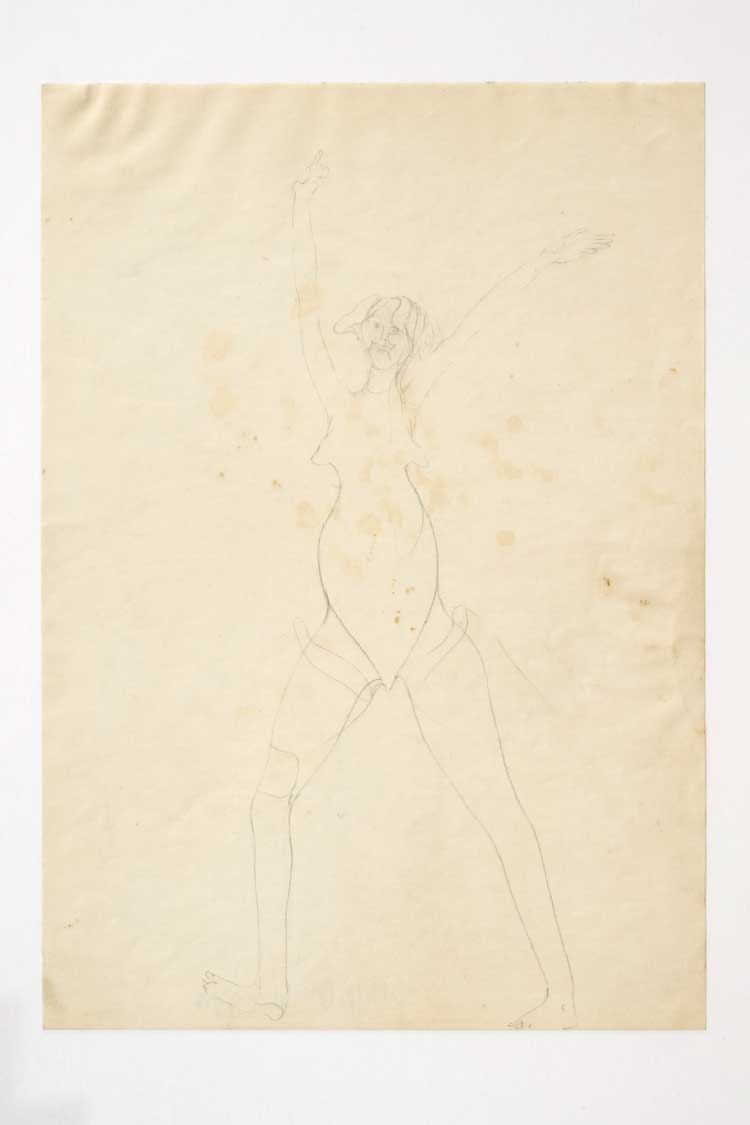
Joseph Beuys. Untitled (Girl), 1956. Pencil on paper, sheet: 29.7 x 21 cm (11.69 x 8.27 in). Photo: Charles Duprat.
Another aspect of Beuys’ drawing that is important to mention is his use of diverse mediums that included pencil, watercolour, collaged organic matter and his signature rust-brown pigment, Braunkreuz. Temkin said: “Sometimes called ‘Beuys-brown,’ Braunkreuz came to function, like fat and felt, as an autobiographical medium linking life and art”.3 Braunkreuz might be regarded as the culmination of his earlier interest, in the 50s, with unusual materials or substances. Iron-enriched compounds signal fertility through their connection to blood while gold-bronze watercolour paint conveys alchemical transformation. Drawings that demonstrate these interests include Untitled (Honey Pot) from 1949, an exquisite pencil sketch made on a torn envelope and mounted on paper coated with ferrous watercolour.
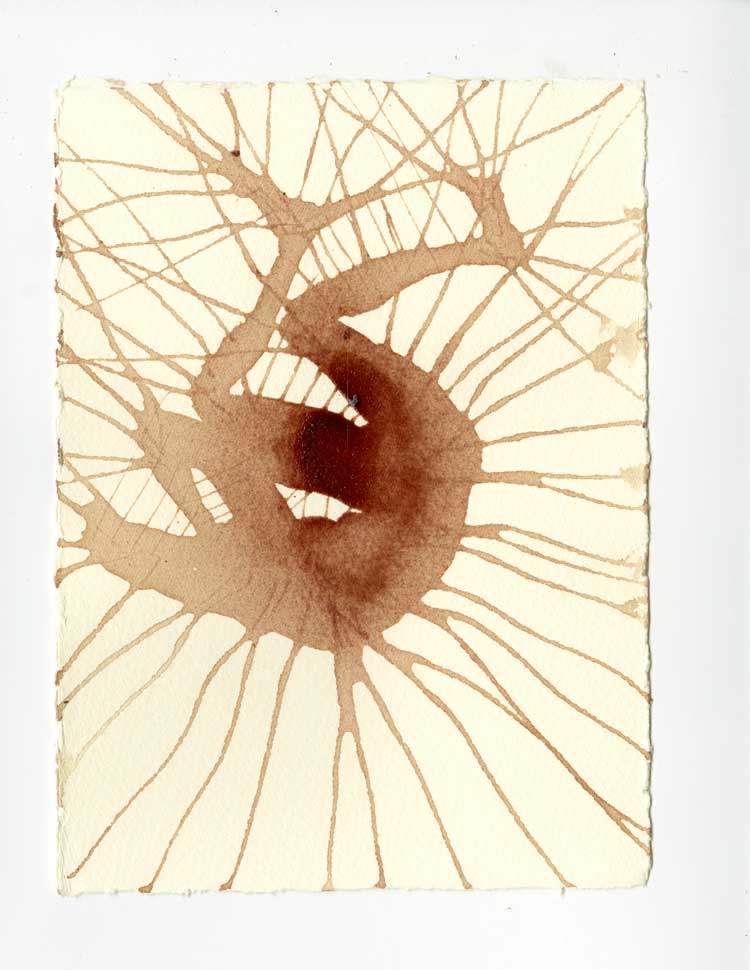
Antony Gormley. 20th Blood Field I, 2021. Blood on paper, 19 x 14 cm (7.48 x 5.51 in). © Antony Gormley.
The second strand to this exhibition of Beuys’ drawing is a standalone room of Beuys’ drawings curated by Antony Gormley. Titled Sense: Beuys/Gormley: A Conversation Through Drawing, it shows drawings by Beuys and Gormley in conversation. In the exhibition’s press release Gormley is quoted as saying: “Beuys and I found drawing a fertile ground, which runs parallel to those actions that we have found necessary to make on the world.” Gormley sets his own work 20th Blood Field (2021) against an untitled Beuys watercolour on brown paper from 1954. The Beuys work shows a truncated female body, visible from just above the waist to below the knees. The fullness of the hips suggests the fecundity of the female figure that interested him in the 50s. Gormley’s drawing shows a lanky figure curled up, legs in the air, seemingly held in position by a network of veins supporting and sustaining it. It is difficult to make direct comparisons between two such different artists. Nevertheless, Gormley’s statement about the place and role of drawing in his own practice as an artist cannot be questioned. However different the two artists may be, Gormley is a long-time admirer of Beuys’ work, and it is not surprising to find that he understands drawing in a similar way to the German artist. For Gormley, drawing is a form of physical thinking that underpins everything else he does. Looking around this room feels a little like listening in on a private conversation between the two men. It is always interesting to have a contemporary artistic perspective on an artist such as Beuys. Still, it is the proliferation of fragments, remnants and sketches by Beuys across this entire exhibition that make it valuable and lend renewed understanding of his work as a whole – it is as if we are breathing the same air.
References
1. Thinking is Form: The Drawings of Joseph Beuys Ann Temkin and Bernice Rose, published by Thames and Hudson, 1993, p17.
2. Ibid, p13.
3. Ibid, p.38.